Chemistry > Lab Experiment > Dehydration Synthesis Gizmo _ Student Exploration: Dehydration Synthesis (All)
Dehydration Synthesis Gizmo _ Student Exploration: Dehydration Synthesis
Document Content and Description Below
Dehydration Synthesis Gizmo _ Student Exploration: Dehydration Synthesis Student Exploration: Dehydration Synthesis Vocabulary: carbohydrate, chemical formula, dehydration synthesis, dis... accharide, glucose, hydrolysis, monosaccharide, polysaccharide, valence Prior Knowledge Questions (Do these BEFORE using the Gizmo.) 1. If you exercise on a hot day, you need to worry about dehydration. In this context, what do you think dehydration means? 2. Astronauts and backpackers often bring dehydrated food. What do you think dehydrated food is? Gizmo Warm-up What do rice, potatoes, and sugar have in common? They are all foods rich in carbohydrates. Carbohydrates are an important energy source for your body. The basic building block of most carbohydrate compounds is the molecule glucose. Using the Dehydration Synthesis Gizmo™, you will learn about the structure of a glucose molecule and how glucose molecules can be joined together to make larger carbohydrate molecules. To begin, select the CREATE GLUCOSE tab. 1. Look at the chemical formula for glucose. How many carbon (C), hydrogen (H), and oxygen (O) atoms are found in a molecule of glucose? 2. Turn on Show chemical structure. Each black sphere represents a carbon, hydrogen, or oxygen atom. The lines connecting the spheres represent chemical bonds. A. How many black spheres are in the diagram? B. How does this relate to the number of carbon, hydrogen, and oxygen atoms in the chemical formula for glucose? · | Activity A: Build a glucose molecule | Get the Gizmo ready: · Be sure the CREATE GLUCOSE tab is still selected. | Introduction: Each element tends to form a certain number of chemical bonds. This value is the valence of the element. For example, a carbon atom has a valence of four. Goal: Construct a molecule of glucose. 1. Identify: The structure of a water molecule (H2O) can be written as H-O-H, with each dash representing a chemical bond. Count the number of bonds the oxygen and hydrogen atoms form in a water molecule. 2. Build a model: Use the carbon, oxygen, and hydrogen atoms from the Atoms box to build a glucose molecule on the empty hexagon in the building region. Use the chemical structure in the lower right as a guide, and pay attention to the valence of each atom as you build. Once you think you have correctly constructed the glucose molecule, click Check. If necessary, continue to modify your molecule until it is correct. 3. Make a diagram: Congratulations, you have completed a molecule of glucose! Click the Tools tab and click Screen shot to take a snapshot of your completed molecule. Right click the image, click Copy, and then paste the image below. (Or use the “Screenshot” function under the “insert” tab in Word.) Explain: How did the valence of each element help you determine the structure of the glucose molecule? 4. 5. Make connections: Carbon forms the backbone of every major type of biological molecule, including carbohydrates, fats, proteins, and nucleic acids. How does carbon’s high valence relate to its ability to form these large and complex biomolecules? | Activity B: Dehydration synthesis | Get the Gizmo ready: · Select the DEHYDRATION tab. | Question: What occurs when two glucose molecules bond? 1. Infer: Glucose is an example of a monosaccharide, the simplest type of carbohydrate. A disaccharide is made from bonding two monosaccharides together. What do you think the prefixes mono- and di- mean? Mono-: 2. Predict: Turn on Show description. Drag both glucose molecules into the building region. Observe the highlighted region. What do you think will happen to the atoms in this region when the glucose molecules bond? 3. Run Gizmo: Click Continue and watch the animation. What happened? What was removed from the glucose molecules when they bonded to form maltose? 4. Infer: Based on what you have seen, create a balanced equation for the dehydration synthesis reaction. (Recall that the formula for glucose is C6H12O6.) You will have to determine the formula of maltose yourself. Turn on Show current formula/equation to check your answer. Summarize: Use what you have observed to explain what occurs during a dehydration synthesis reaction. 5. Apply: A trisaccharide is a carbohydrate made of three monosaccharides. What do you think would be the chemical formula of a trisaccharide made of three bonded glucose molecules? | Activity C: Hydrolysis | Get the Gizmo ready: · Select the Hydrolysis tab. · Turn on Show description and Show current formula/equation. | Introduction: Carbohydrates made up of three or more bonded monosaccharides are known as polysaccharides. In a reaction known as hydrolysis, your body breaks down polysaccharides into individual monosaccharides that can be used by your cells for energy. Question: What occurs when polysaccharides break up into monosaccharides? 1. Predict: Examine the polysaccharide in the building region and its chemical formula. A. How many monosaccharides can form if this polysaccharide breaks up? Recall the formula of glucose is C6H12O6. How many carbon, oxygen, and hydrogen atoms will you need for three glucose molecules? What must be added to the polysaccharide in the Gizmo to get three glucose molecules? Observe: Turn off Show current formula/equation. Drag a water molecule into the building region. Click Continue. What happened? Infer: Create a balanced equation for the hydrolysis reaction that just occurred. Turn on Show current formula/equation to check your answer. Observe: Turn off Show current formula/equation. Drag the second water molecule into the building region. Click Continue. What happened? 2. (Activity C continued on next page) Activity C (continued from previous page) 3. Summarize: Now create a balanced equation for that shows the entire hydrolysis reaction. (In other words, the equation should show how the polysaccharide broke up into three separate glucose molecules.) Turn on Show current formula/equation to check your answer. 4. Compare: How do hydrolysis reactions compare to dehydration synthesis reactions? 5. Apply: Amylose is a polysaccharide that consists of a long single chain of glucose molecules. Consider an amylose molecule with only four glucose molecules. A. How many water molecules are released when the 4-glucose amylose forms? __3 B. What do you think is the chemical formula for this amylose? C. How many water molecules would be needed to break this amylose down into four glucose molecules? 6. Extend your thinking: Hydrolysis of the carbohydrates you eat begins in your mouth as you chew. How do you think this process might be affected if a person’s salivary glands were unable to produce saliva, which is mostly composed of water? [Show More]
Last updated: 8 months ago
Preview 1 out of 7 pages

Reviews( 0 )
Recommended For You
Biology> Lab Experiment > Lab Report > 03 - Dehydration Synthesis Gizmo / Student Exploration: Dehydration Synthesis (All)

Lab Report > 03 - Dehydration Synthesis Gizmo / Student Exploration: Dehydration Synthesis
Name: ______________________________________ Date: ________________________ Student Exploration: Dehydration Synthesis Vocabulary: carbohydrate, chemical formula, dehydration synt hesis, disaccharide,...
By Grademaster , Uploaded: Dec 23, 2020
$8
Physics> Lab Experiment > Periodic Trends Lab Experiment_ Student Exploration (All)
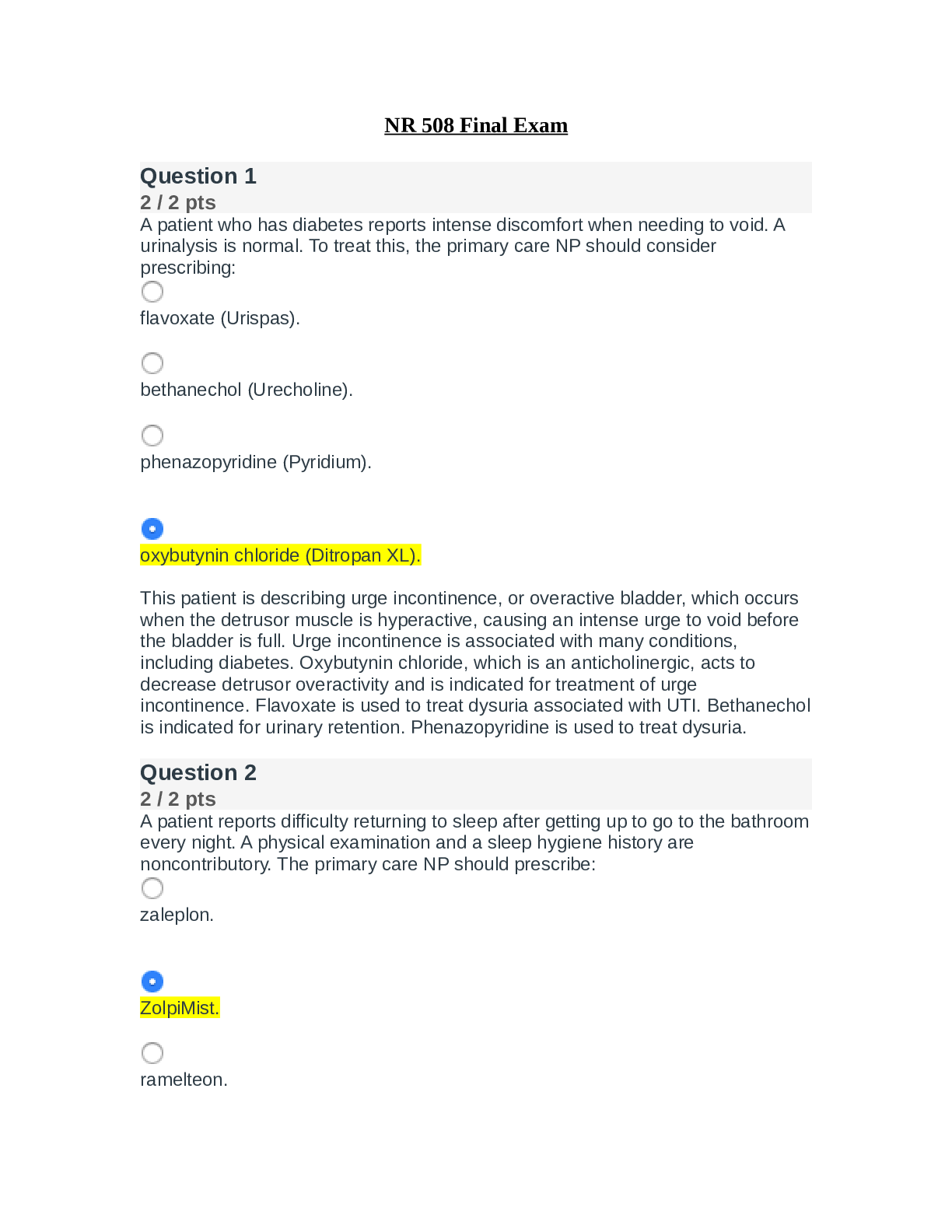
Periodic Trends Lab Experiment_ Student Exploration
ame: Xavier Thomas Date: 9/4/19 Student Exploration: Periodic Trends Prior Knowledge Questions (Do these BEFORE using the...
By Kirsch , Uploaded: Nov 05, 2020
$9
Chemistry> Lab Experiment > Diffusion and Osmosis: EXPERIMENT 1. DIFFUSION THROUGH GELATIN, EXPERIMENT 2: DIFFUSION CONCENTRATION GRADIENTS AND MEMBRANE PERMEABILITY and EXPERIMENT 3: OSMOSIS TONICITY AND THE PLANT CELL (All)

Diffusion and Osmosis: EXPERIMENT 1. DIFFUSION THROUGH GELATIN, EXPERIMENT 2: DIFFUSION CONCENTRATION GRADIENTS AND MEMBRANE PERMEABILITY and EXPERIMENT 3: OSMOSIS TONICITY AND THE PLANT CELL
Pre-Lab Questions 1. A concentration gradient affects the direction that solutes diffusion. Describe how molecules move with respect to the concentration. 2. How does size affect the rate of...
By QuizMaster , Uploaded: Oct 13, 2020
$9
NURS 215> Lab Experiment > Tina Jones Hair Skin and Nails Lab Pass Objective Data Collection file-Shadow Health (All)
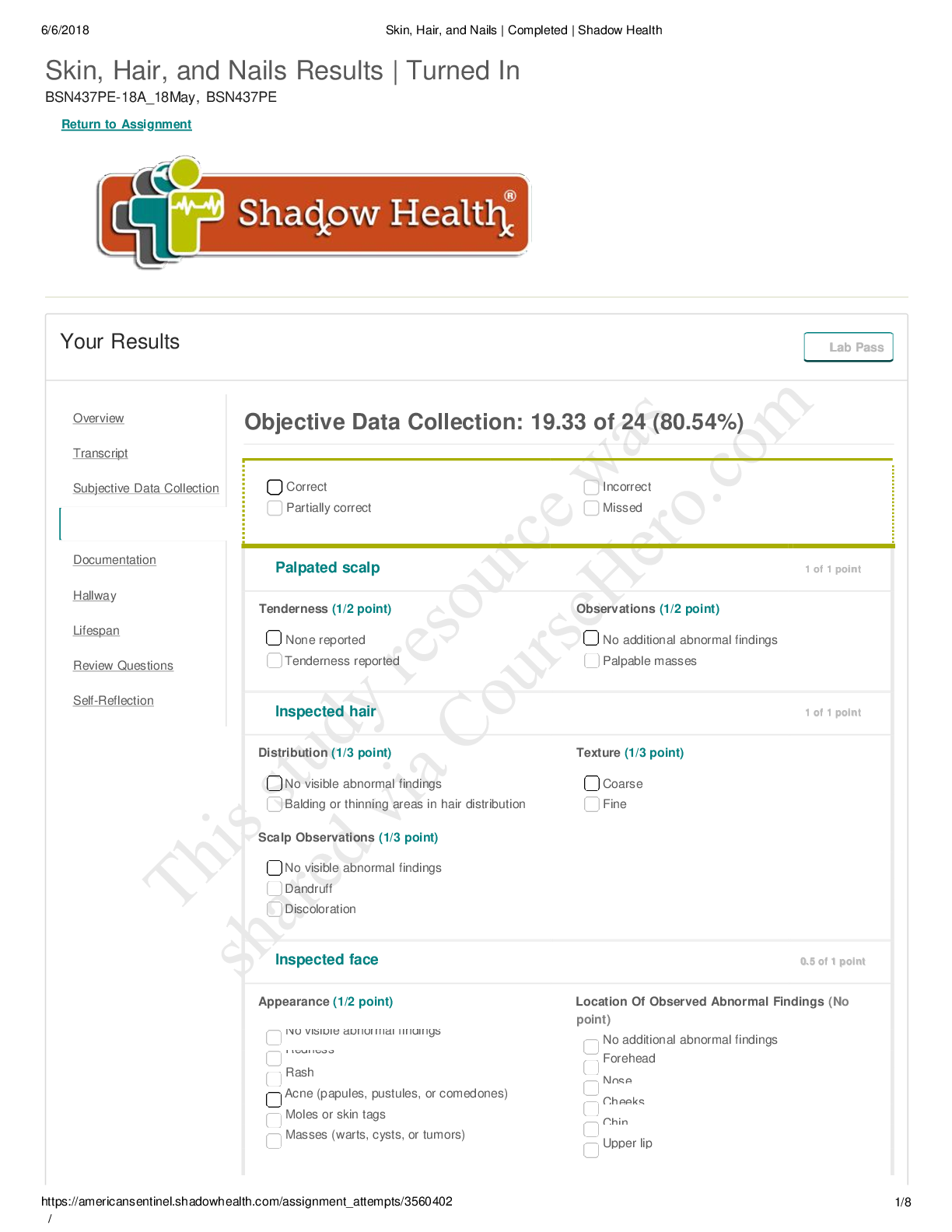
Tina Jones Hair Skin and Nails Lab Pass Objective Data Collection file-Shadow Health
Your Results Lab Pass Objective Data Collection: 19.33 of 24 (80.54%)
By TopRankProf , Uploaded: Jun 07, 2023
$6.5
Psychiatric Nursing> Lab Experiment > BIOD171 Microbiology Lab Notebook 2 2 1 5 (All)
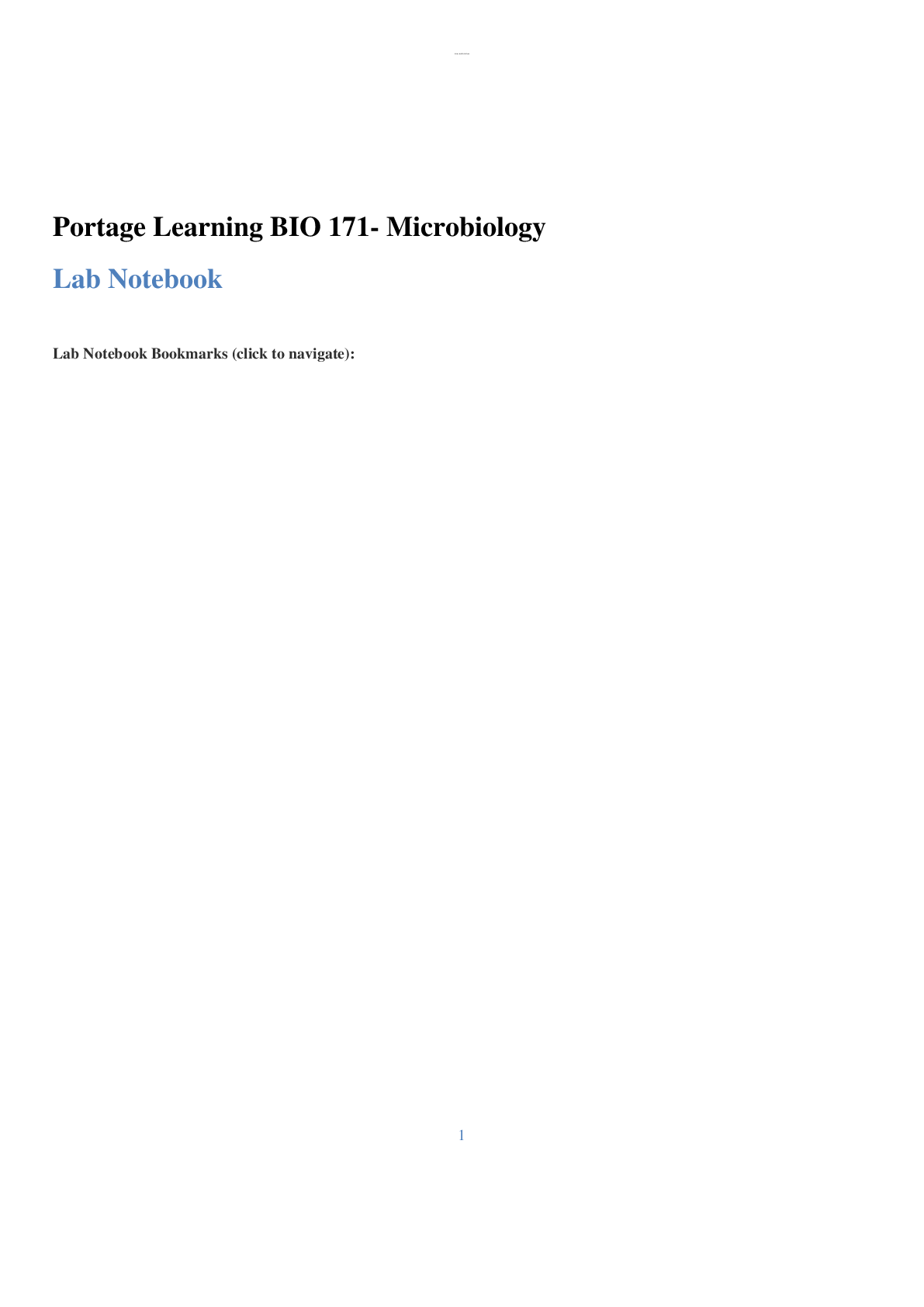
BIOD171 Microbiology Lab Notebook 2 2 1 5
BIOD171 Microbiology Lab Notebook 2 2 1 5
By ACADEMICTUTORIAL , Uploaded: Jul 04, 2023
$6
BIOL 1045> Lab Experiment > MIDTERM LAB REPORT ON INVESTIGATION OF CARBONDIOXIDE PRODUCTION FROM CELLULAR RESPIRATION OF YEAST, 2023 (All)
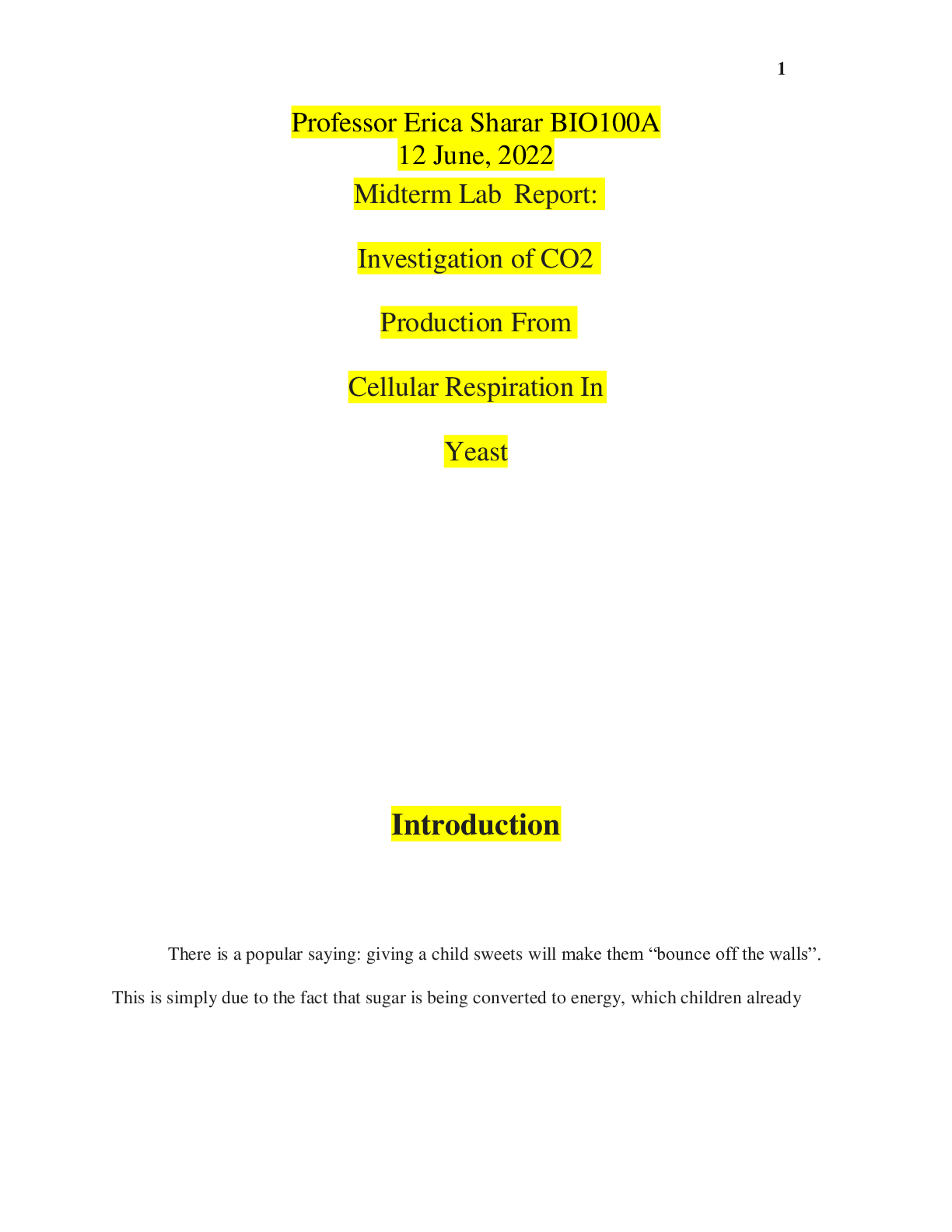
MIDTERM LAB REPORT ON INVESTIGATION OF CARBONDIOXIDE PRODUCTION FROM CELLULAR RESPIRATION OF YEAST, 2023
Introduction There is a popular saying: giving a child sweets will make them “bounce off the walls”. This is simply due to the fact that sugar is being converted to energy, which children al...
By TopRankProf , Uploaded: Jun 19, 2023
$10
Health Care> Lab Experiment > Module 07 Lab Worksheet Urinary System (All)

Module 07 Lab Worksheet Urinary System
Module 07 Lab Worksheet Urinary System
By ACADEMICTUTORIAL , Uploaded: Dec 22, 2021
$3
*NURSING> Lab Experiment > NR 324 Week 2 Lab Prep (All)
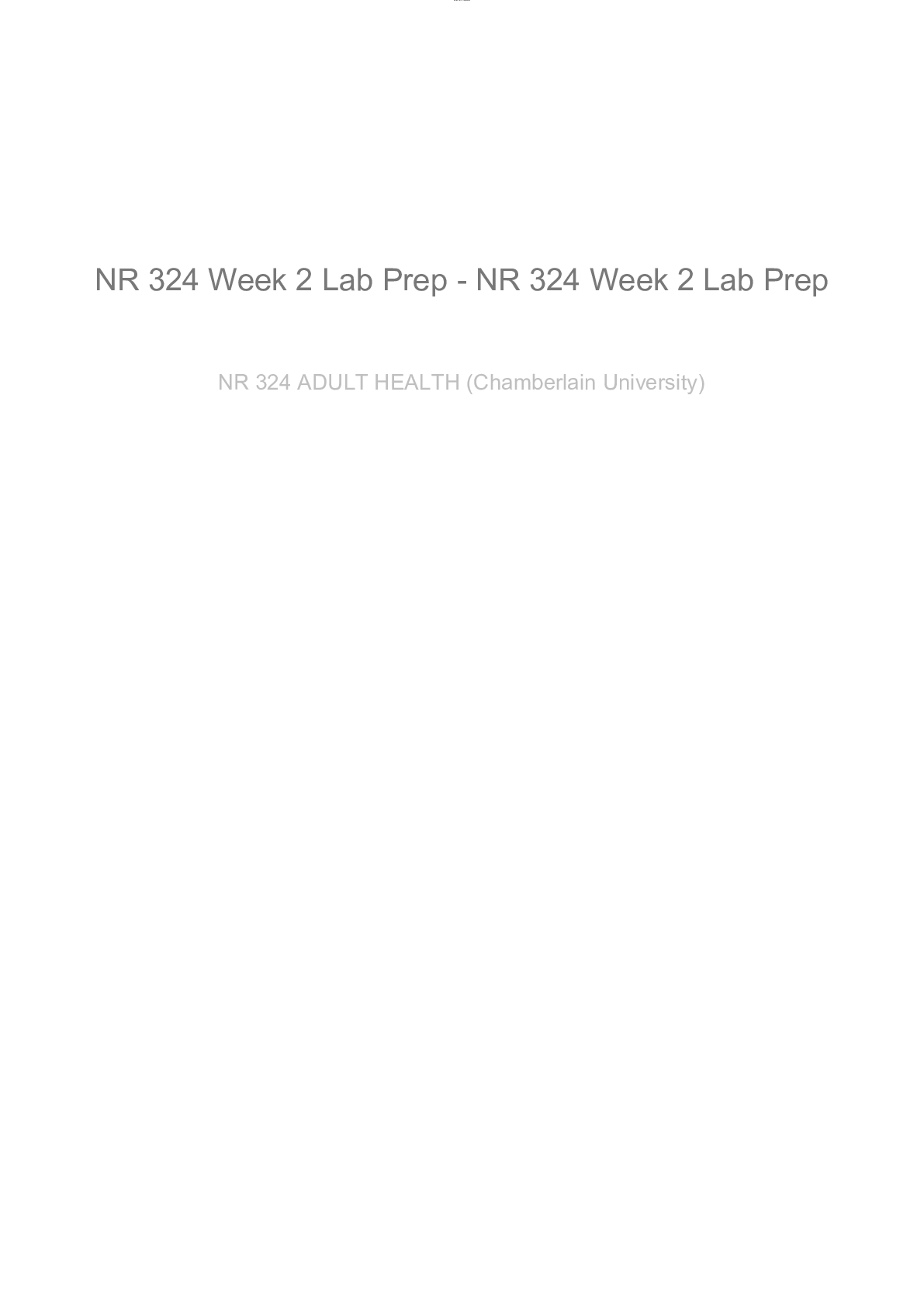
NR 324 Week 2 Lab Prep
NR 324 ADULT HEALTH Week 2 Lab Prep, Latest Fall 2020 Complete Solution
By ACADEMICTUTORIAL , Uploaded: Mar 20, 2022
$2.5
Chemistry> Lab Experiment > CHEM 101L Lab 2 The Scientific Method (All)
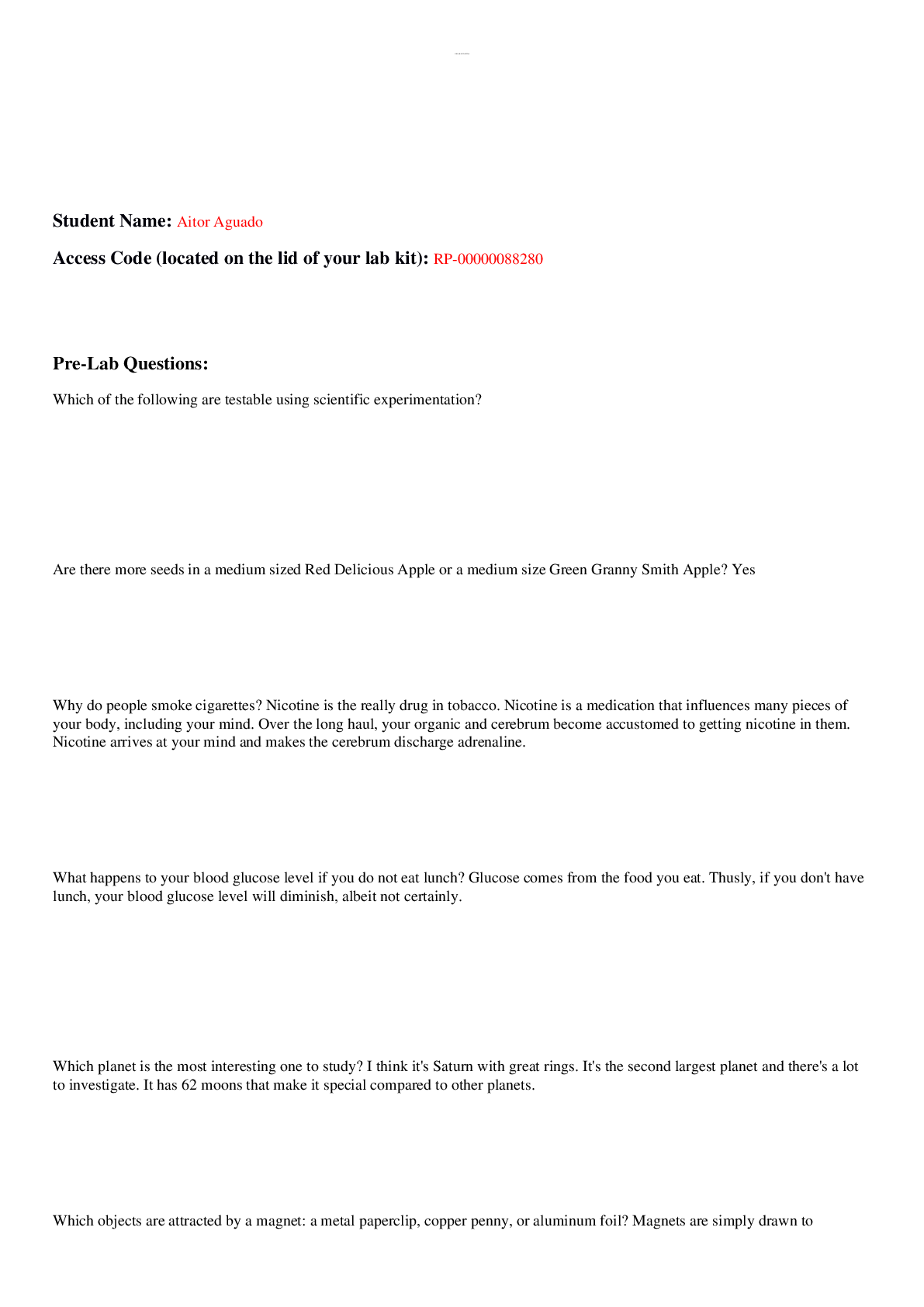
CHEM 101L Lab 2 The Scientific Method
CHEM 101L Lab 2 The Scientific Method
By ACADEMICTUTORIAL , Uploaded: Mar 27, 2023
$3
Biology> Lab Experiment > Lab 8 for Microbiology Lab from Straighterline (All)
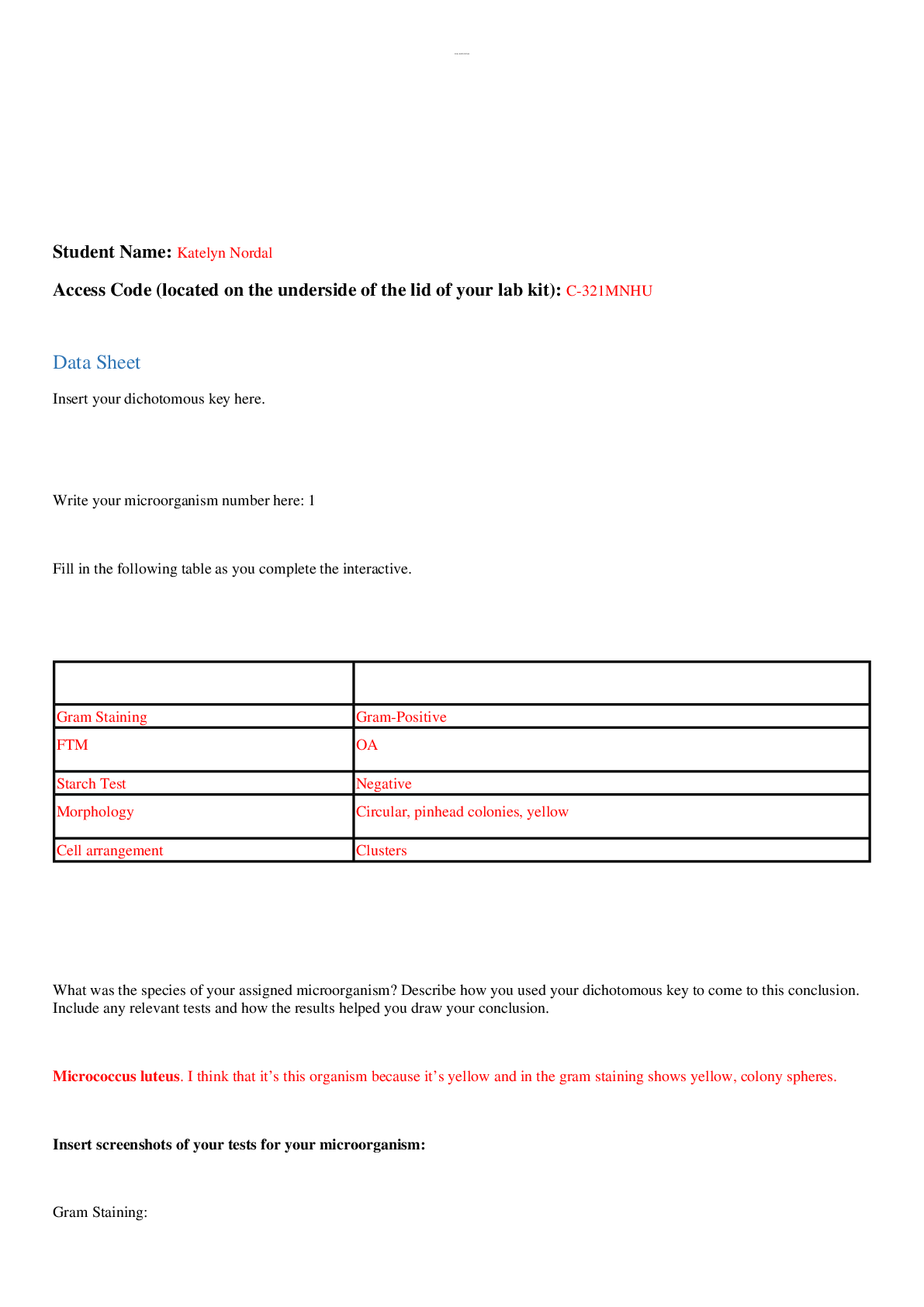
Lab 8 for Microbiology Lab from Straighterline
Lab 8 for Microbiology Lab from Straighterline
By ACADEMICTUTORIAL , Uploaded: Apr 01, 2023
$3.5
Document information
Connected school, study & course
About the document
Uploaded On
Nov 05, 2020
Number of pages
7
Written in
Additional information
This document has been written for:
Uploaded
Nov 05, 2020
Downloads
2
Views
427






